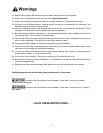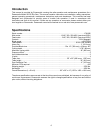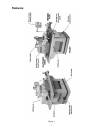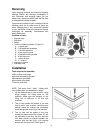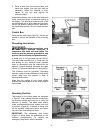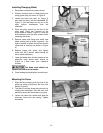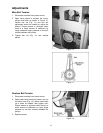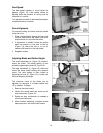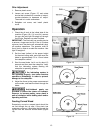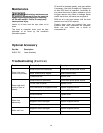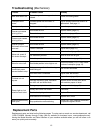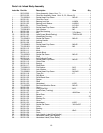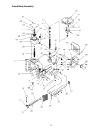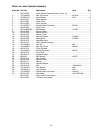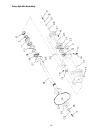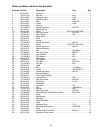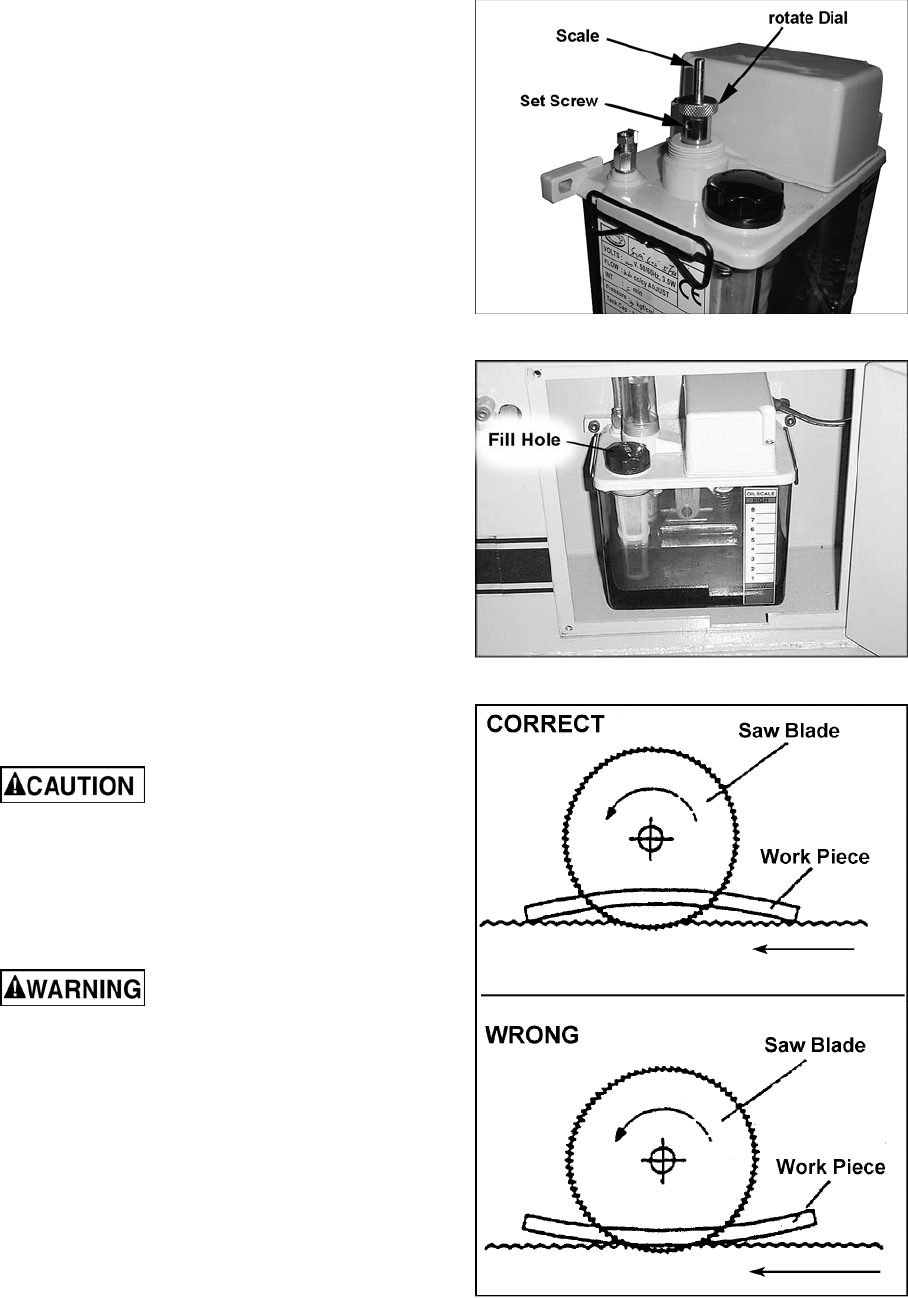
13
Oiler Adjustment
1. Remove plastic cover.
2. Loosen set screw (Figure 17) and rotate
knurled dial clockwise to increase oil output;
counter-clockwise to decrease oil output.
The scale is in cubic centimeters.
3. Retighten set screw, and install plastic
cover.
Operation
1. Check the oil tank at the infeed side of the
machine (Figure 18). If it is not full, remove
the cap and add light 20-weight oil through
the fill hole. Replace cap when finished.
IMPORTANT: The lubricator has a safety device
to ensure a longer service life. If the oil is below
minimum level, the device will automatically shut
off machine operations. The operator must fill
the oil tank in order to re-start the machine. Use
light 20-weight oil.
2. Set the head (rollers) at the proper height
for the stock being used, and make sure the
blade is approximately 0.5 to 1.5mm below
the caterpillar surface.
3. Start the saw blade. Let it run for about 10
seconds and then start the caterpillar. Verify
that the lubricating system feeding the
caterpillar is operating properly.
If the lubricating system is
not operating properly, shut down machine
operations immediately in order to prevent
damage to the caterpillar.
4. Adjust the fence to the proper measurement
on the scale, and feed the stock through the
blade.
Anti-kickback pawls are
provided to reduce the chance of kickback.
However, to increase safety, never stand in
path of workpiece while feeding stock and/or
operating machine.
Feeding Curved Wood
Excessively curved or warped stock should be
not fed through the rip saw. If the stock has
moderate curvature, it should be fed through the
rip saw with the concave surface down (Figure
19).
Figure 17
Figure 18
Figure 19



